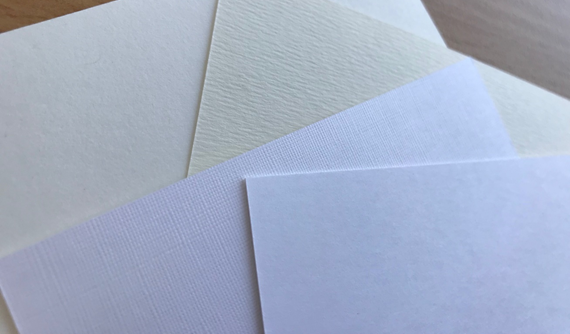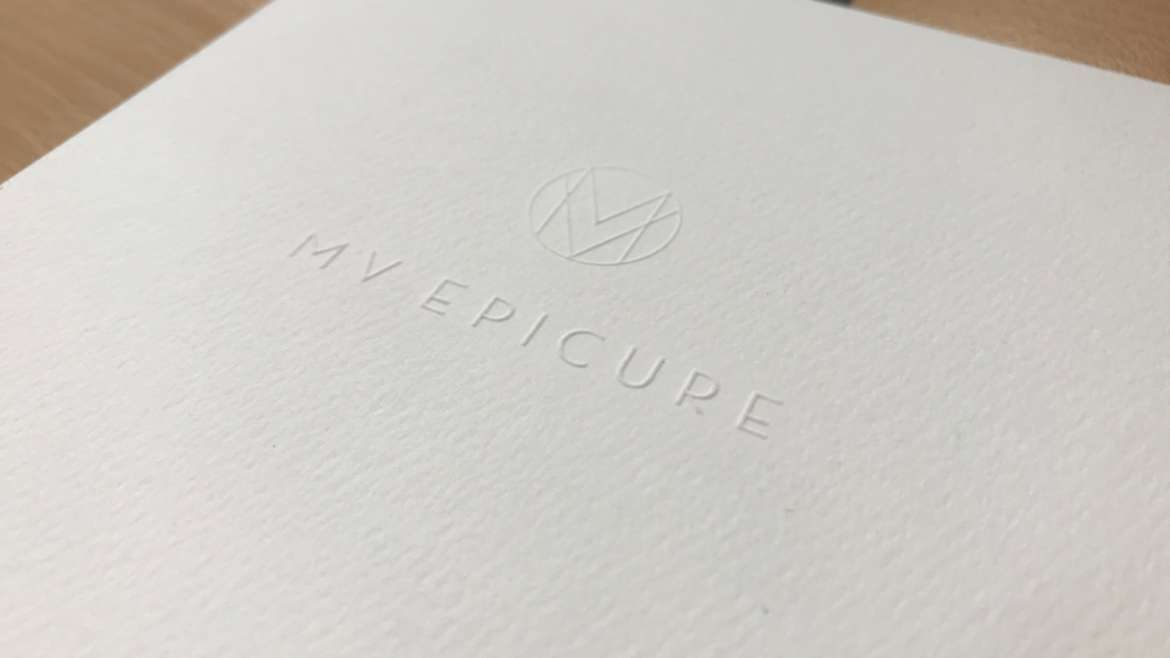Choosing paper stock for your print job can be just as important as the design itself! But how do you know what paper stock to choose?
Some people may think of gloss as the paper equivalent of nails down a chalkboard. First of all, rude. Second, all papers have their pros and cons, and the decision doesn’t just come down to a e s t h e t i c (though this is important too), but also the actual intended purpose of your printed item.
Choosing paper stock for your print project can be daunting. There are more papers to pick from than you can poke a stick at, if that’s something you like to do. So where to start?
CHOOSING PAPER STOCK IN THE RIGHT THICKNESS
Paper stock is often categorised by gsm (or g/m²) which means grams per square metre. The average home printer paper is about 80gsm, and a standard business card is usually between 300-350gsm. Different papers do “bulk up” differently, such as dense bleachboard stocks that have a coating on one side. However, gsm is still a good guide as to how thick your paper will be.
Another factor is the grain of the paper – particularly for something like business cards, it’s best to have the grain running with the length of the printed item. That way when you bend it against the grain, it will have more resistance, and feel thicker.
It also helps to crease a folded card along the grain of the paper, as it can reduce the chance of the paper cracking.
CHOOSING PAPER STOCK BASED ON THE ARTWORK
Coated
If you are working with photography or particularly bright colours, they will ‘pop’ the most on a coated stock. The coating on the paper restricts how much ink is absorbed, which in turn decreases the spread of ink (known as dot gain). This provides a sharp, vibrant print result.
Gloss is handy if you’re after something with a bit of durability, such as presentation folders, information brochures, and maps. But if you need to write on it, you might struggle.
You also might just hate the look of it. To each their own!
Silk or satin is a great alternative – still with a coating, but not as shiny as gloss. These are perfect for things like direct mail pieces, and most advertising material.
Uncoated
I wish I had a dollar for every time someone asked me for “the paper that Frankie magazine is printed on.” I’d have at least $6. That’s a sandwich.
What you are after is an uncoated paper, around 120-150gsm. Without the coating, the ink will absorb into the paper, which gives everything a flat, dull look, with low contrast.
Uncoated paper can be smooth, super smooth, heavily textured (see below), very slightly textured (as in wove or vellum), or “toothy”. The smooth uncoated stocks are perfect for corporate stationery, and specialty textured uncoated papers are great for things like greeting cards or invitations.
Specialty
Textured papers are uncoated papers that also have an embossed pattern to the surface, such as laid, felt, eggshell, or linen. A simple striking design on a textured paper is just *chef kiss*

If you want to get seriously fancy, such as for wedding invitations or high-end stationery, there are even more options.
- Translucent – sometimes called tracing paper, and sometimes also referred to as “vellum” (based on the old days when they used animal skin for parchment…we don’t do that). This can be really interesting as a brochure cover or part of a wedding stationery suite.
- Metallic – from light silvers and golds to vivid sparkly colours.
- Coloured – including black, there is a really wide range of coloured paper (and a range of pricing) available! If you’re after a very specific colour, this can also be achieved by printing any colour onto a white stock.
- Recycled – 100% recycled, or part recycled and part pulp from responsibly managed forests (which actually applies to most papers these days! And yes, recycled isn’t really “fancy” but I couldn’t fit it into it’s own section).
- Kraft – also known as “that brown paper”
STILL NOT SURE?
We can achieve amazing results on any kind of paper. If you need help choosing paper stock for your next print project, get in touch – we love to talk paper!

